Physics > QUESTION PAPER (QP) > GCSE,Questions. Latest 2022/2023, HIGHLY EXAMINABLE QUESTIONS. GRADED A+. Download to score A+ (All)
GCSE,Questions. Latest 2022/2023, HIGHLY EXAMINABLE QUESTIONS. GRADED A+. Download to score A+
Document Content and Description Below
Q1. The following figure shows a person sliding down a zip wire. (a) Describe how the vertical height of the tower could be measured accurately. _____________________________________________________... ______________ ___________________________________________________________________ ___________________________________________________________________ ___________________________________________________________________ (2) (b) When using the zip wire, the person moved through a vertical height of 2.0 m. The person has a mass of 45 kg. Gravitational field strength = 9.8 N/kg. Calculate the change in gravitational potential energy of the person. Use the equation: gravitational potential energy = mass × gravitational field strength × height ___________________________________________________________________ ___________________________________________________________________ ___________________________________________________________________ ___________________________________________________________________ Change in gravitational potential energy = _______________________ J (2) (c) Give three factors that affected the kinetic energy of the person as she reached the bottom of the zip wire. 1 _________________________________________________________________ ___________________________________________________________________ 2 _________________________________________________________________ ___________________________________________________________________ 3 _________________________________________________________________ ___________________________________________________________________ (3) (Total 7 marks)Q2. The photograph below shows a theme park ride called AquaShute. (a) Riders of the AquaShute sit on a sled and move down a slide. There is a layer of water between the sled and the slide. How does the layer of water affect the friction between the sled and the slide? Tick (✓) one box. The friction is decreased. The friction is increased. The friction is not affected. (1)(b) The mass of one rider is 62.5 kg. The height of the slide is 16.0 m. gravitational field strength = 9.8 N/kg Calculate the gravitational potential energy of the rider at the top of the slide. Use the equation: gravitational potential energy = mass × gravitational field strength × height ___________________________________________________________________ ___________________________________________________________________ ___________________________________________________________________ ___________________________________________________________________ Gravitational potential energy = _______________ J (2) (c) At the bottom of the slide the speed of the rider is 12 m/s. The mass of the rider is 62.5 kg. Calculate the kinetic energy of the rider at the bottom of the slide. Use the equation: kinetic energy = 0.5 × mass × (speed)2 ___________________________________________________________________ ___________________________________________________________________ ___________________________________________________________________ ___________________________________________________________________ Kinetic energy = _______________ J (2) (d) When a rider reaches the bottom of the slide, the sled decelerates and stops. Give two factors that will affect how far the sled will move before it stops. 1 _________________________________________________________________ ___________________________________________________________________ 2 _________________________________________________________________ ___________________________________________________________________ (2) (Total 7 marks)Q3. The diagram below shows a cyclist riding along a flat road. (a) Complete the sentence. Choose answers from the box. chemical elastic potential gravitational potential kinetic As the cyclist accelerates, the _______________________ energy store in the cyclist’s body decreases and the _______________________ energy of the cyclist increases. (2) (b) The mass of the cyclist is 80 kg. The speed of the cyclist is 12 m/s. Calculate the kinetic energy of the cyclist. Use the equation: kinetic energy = 0.5 × mass × (speed)2 [Show More]
Last updated: 1 year ago
Preview 1 out of 24 pages
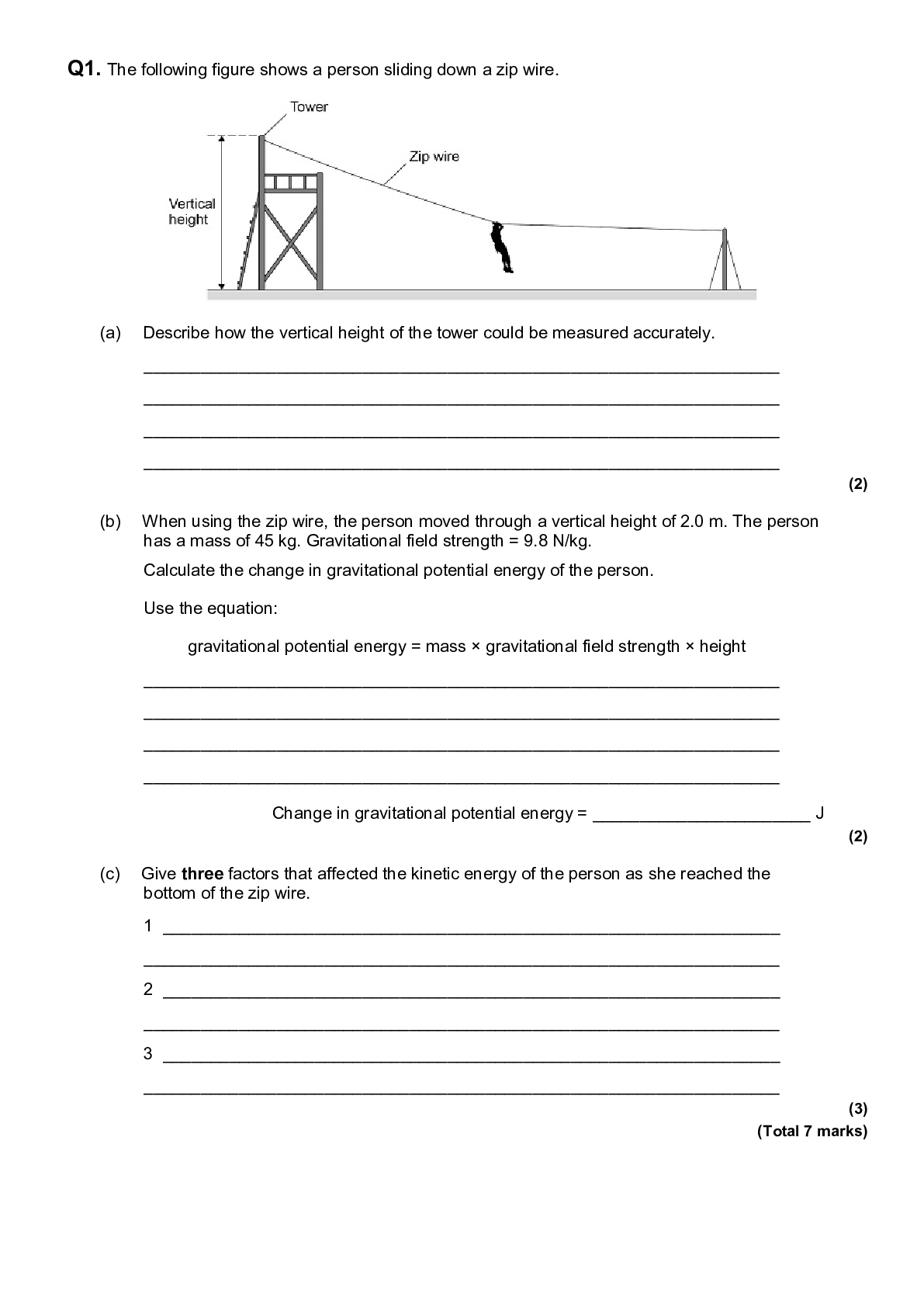
Buy this document to get the full access instantly
Instant Download Access after purchase
Add to cartInstant download
We Accept:

Reviews( 0 )
$8.00
Document information
Connected school, study & course
About the document
Uploaded On
Jun 07, 2022
Number of pages
24
Written in
Additional information
This document has been written for:
Uploaded
Jun 07, 2022
Downloads
0
Views
165


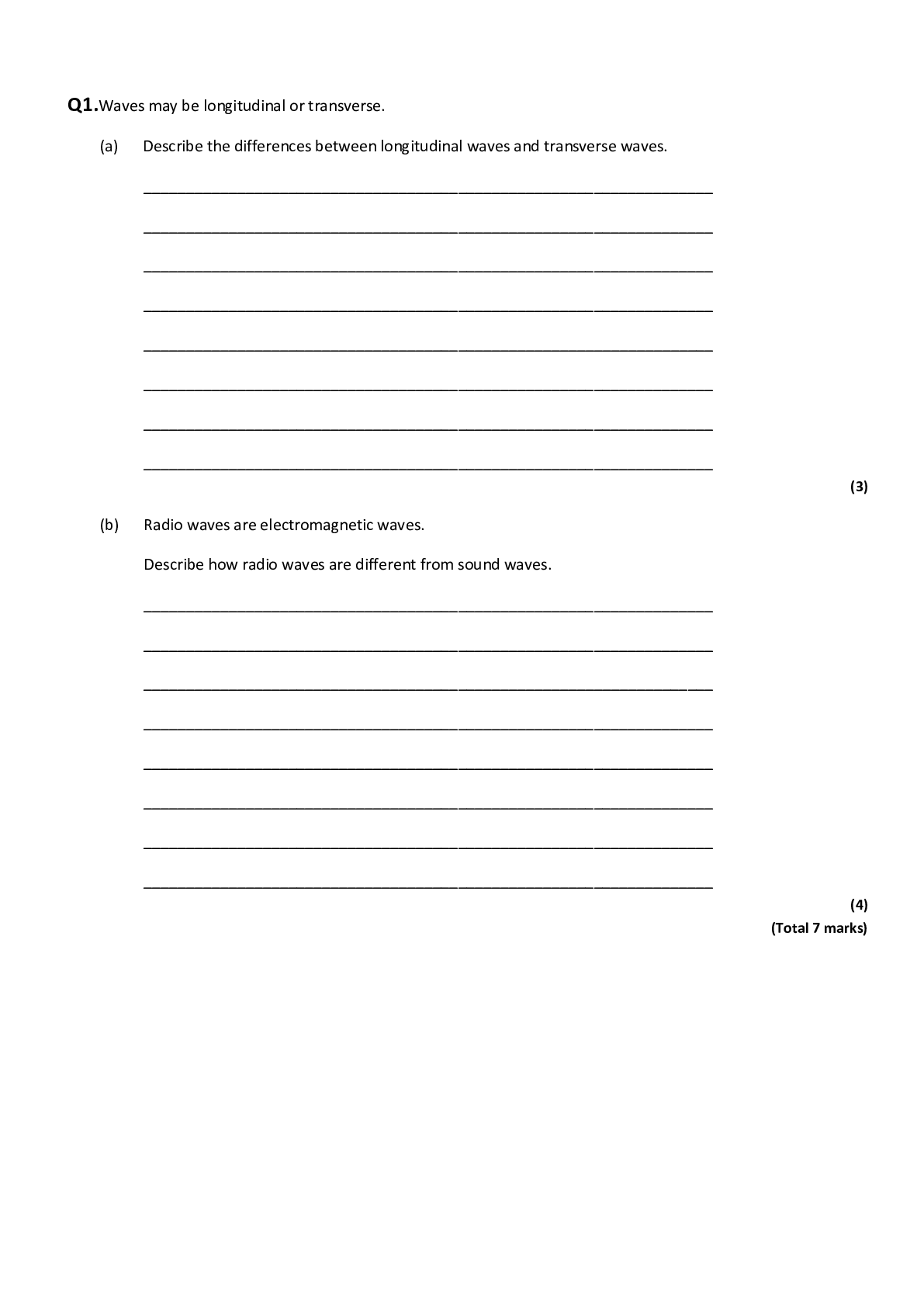





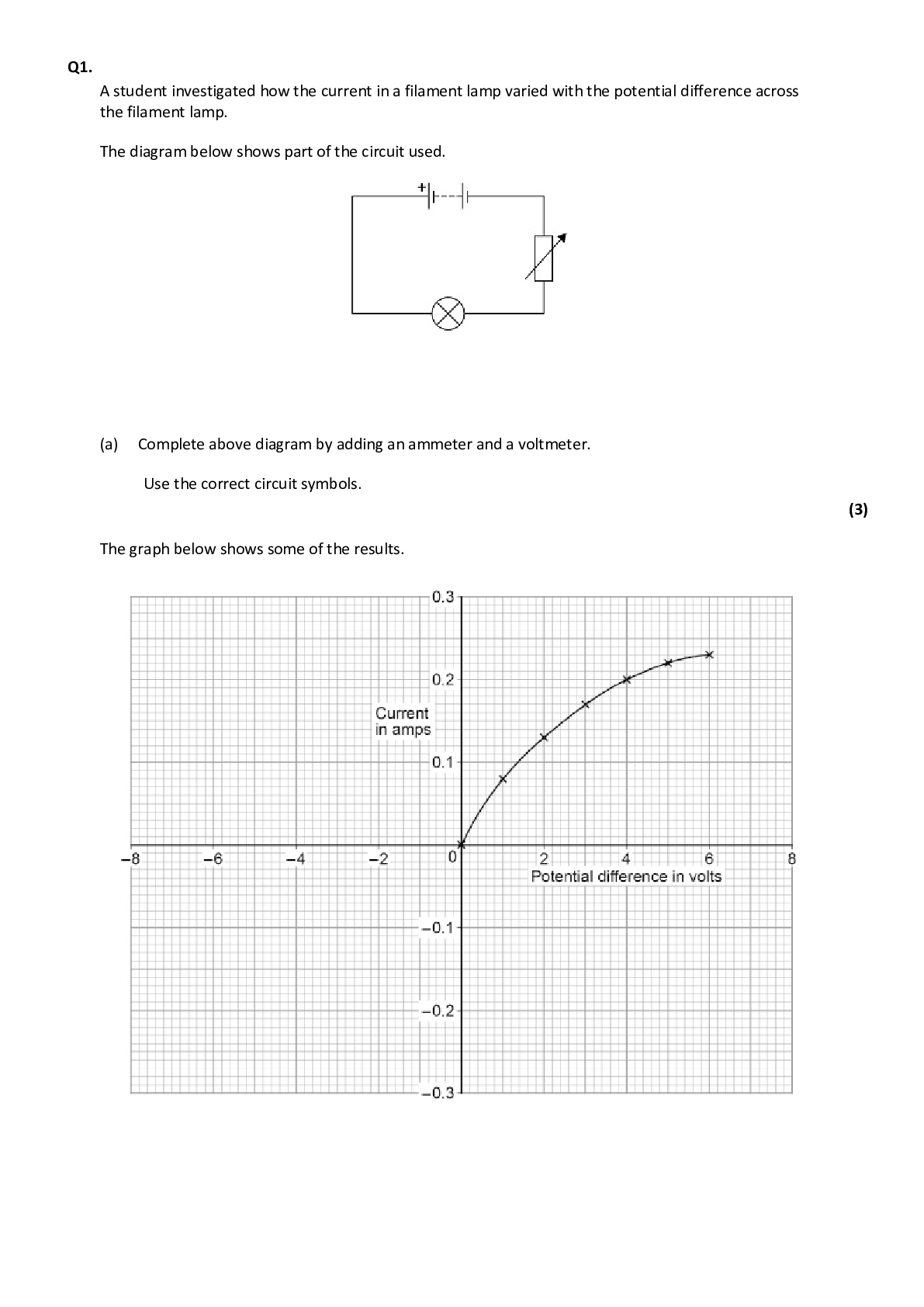
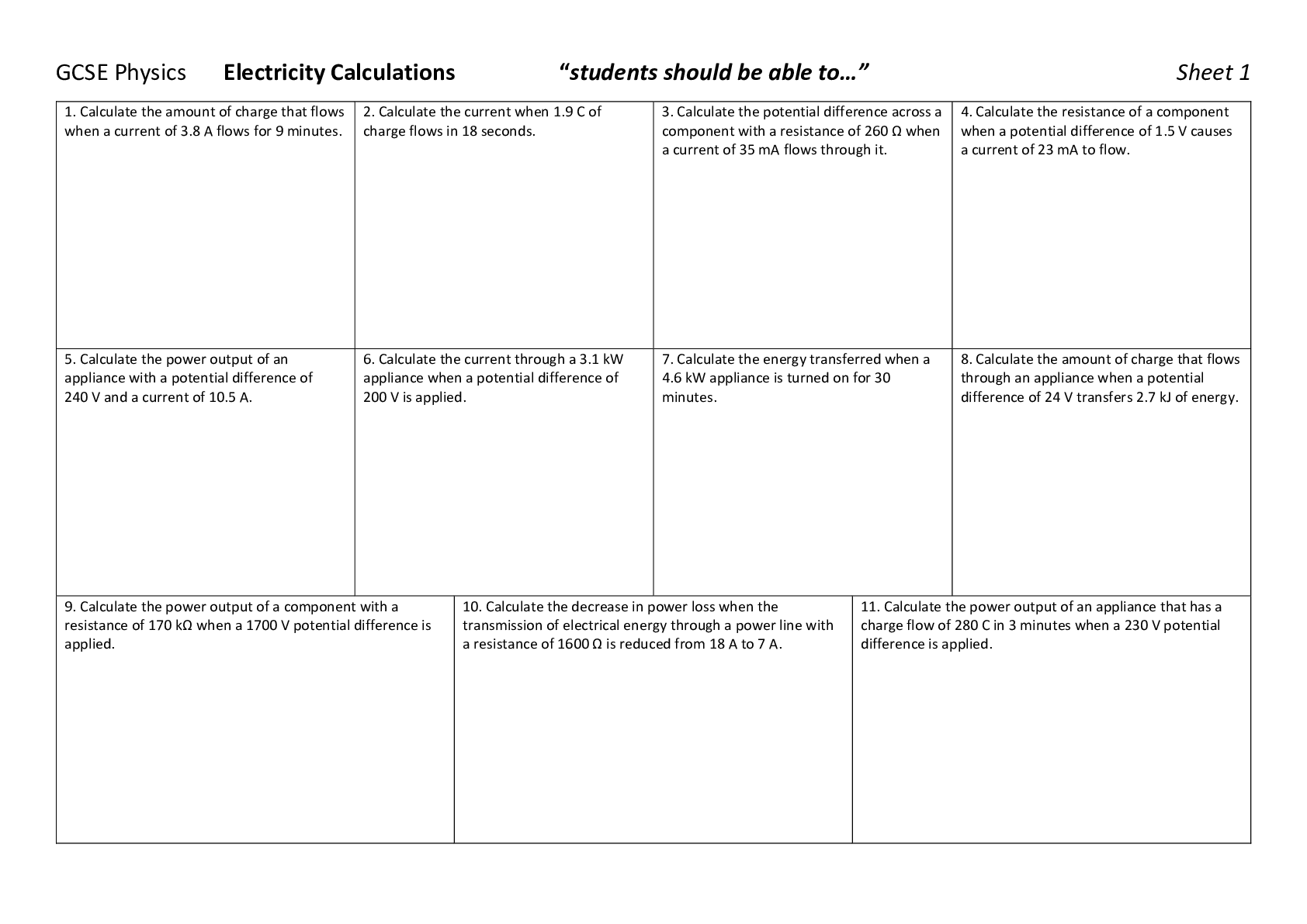
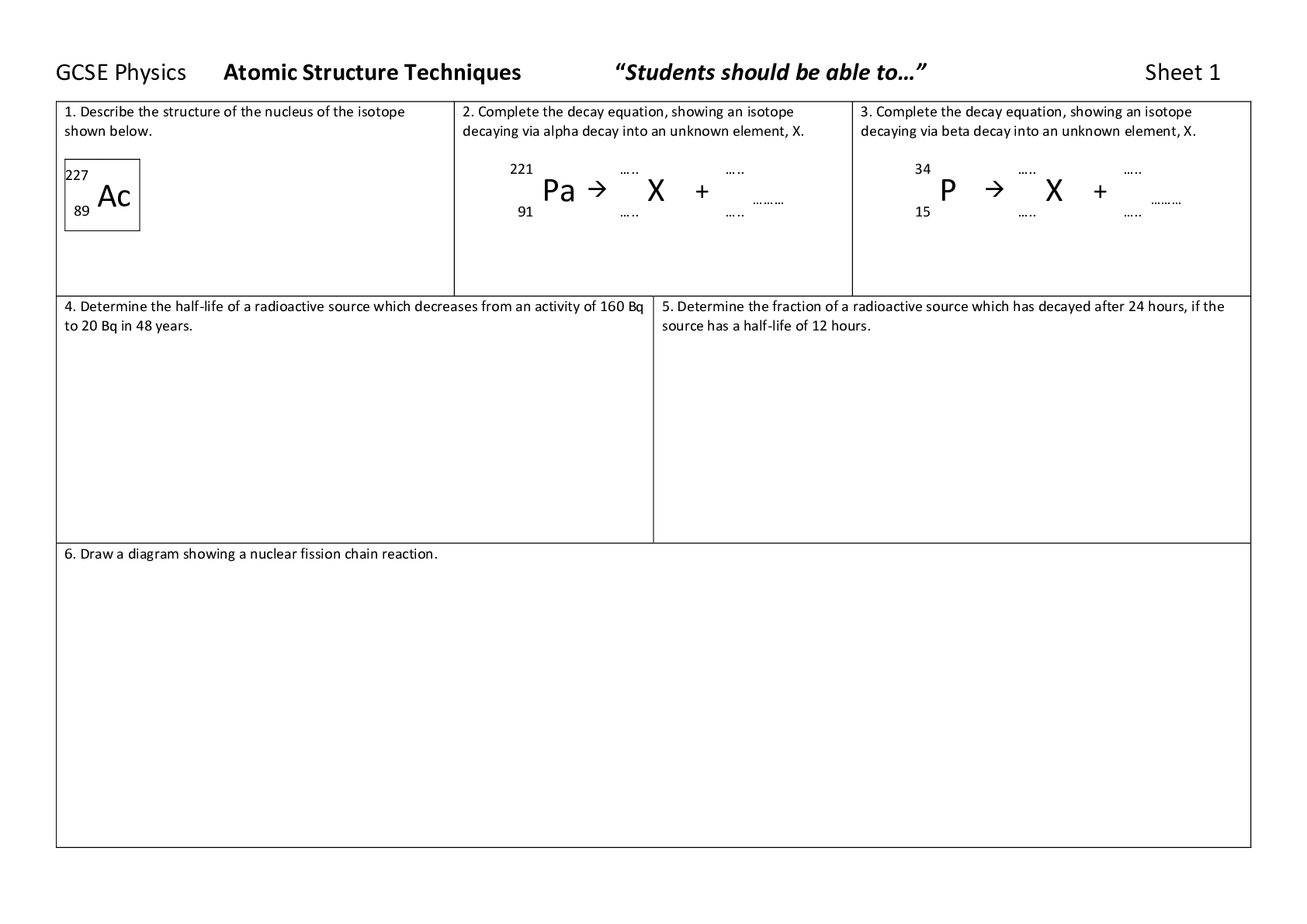

 Correct Study Guide, Download to Score A.png)


